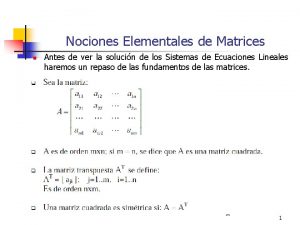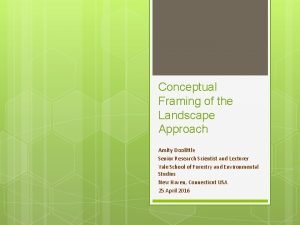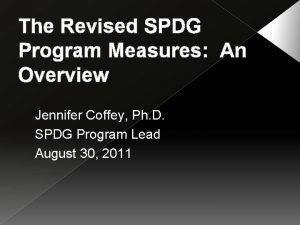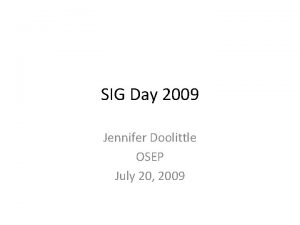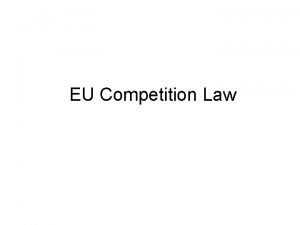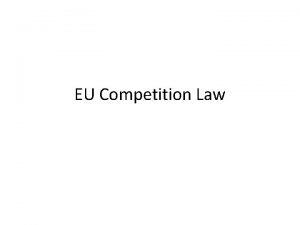Overview of the SPDG Competition Jennifer Doolittle Ph















- Slides: 15

Overview of the SPDG Competition Jennifer Doolittle, Ph. D. April 19, 2010 1

The Basics ---- will be available for new awards Application is due ---– If using E-applications due 4: 30: 00 Eastern time – If mailing, postmarked before 12: 00 AM 100 pages for the Project Narrative – Double-spaced – 12 point font 2

Budget Note: We will set the amount of each award after considering-(1) The amount of funds available for making the grants; (2) The relative population of the State or outlying area; (3) The types of activities proposed by the State or outlying area; (4) The alignment of proposed activities with section 612(a)(14) of IDEA; (5) The alignment of proposed activities with State plans and applications submitted under sections 1111 and 2112, respectively, of the ESEA; and (6) The use, as appropriate, of scientifically-based research and instruction. Estimated Average Size of Awards: $-----, excluding outlying areas. Estimated Number of Awards: --. Note: The Department is not bound by any estimates in this notice. 3

Keep in Mind 90% of your budgeted amount needs to be for activities delineated in (a) “Professional Development Activities” under “Use of Funds” Must also have an activity or activities related to (b) “Other Activities” under Use of Funds You must budget to attend the Project Directors’ Conference & $4, 000 annually for support of the State Personnel Development Grants Program Web site 4

Contracts and Subgrants Must award contracts or subgrants to LEAs, institutions of higher education, parent training and information centers, or community parent resource centers, as appropriate, to carry out the State plan; and May award contracts and subgrants to other public and private entities, including the lead agency under Part C of IDEA, to carry out the State plan. 5

Big Ideas Given our needs, how will this grant get us where we want to go? How can we communicate our ideas as to how we're going to get there? What will it look like when we're there? 6

The application narrative should include the following sections in this order: (a) Need for project. (19 points) (1) The Secretary considers the need for the proposed project. (2) In determining the need for the proposed project the Secretary considers the extent to which specific gaps or weaknesses in services, infrastructure, or opportunities have been identified and will be addressed by the proposed project, including the nature and magnitude of those gaps or weaknesses. 7

(b) Significance. (19 points) (1) The Secretary considers the significance of the proposed project. (2) In determining the significance of the proposed project, the Secretary considers the likelihood that the proposed project will result in system change or improvement. 8

(c) Quality of the project design. (19 points) (1) The Secretary considers the quality of the design of the proposed project. (2) In determining the quality of the design of the proposed project, the Secretary considers the following factors: (i) The extent to which the goals, objectives, and outcomes to be achieved by the proposed project are clearly specified and measurable. (ii) The extent to which the design of the proposed project is appropriate to, and will successfully address, the needs of the target population or other identified needs. (iii) The extent to which the proposed activities constitute a coherent, sustained program of training in the field. (iv) The extent to which the design of the proposed project reflects up‑to‑date knowledge from research and effective practice. (v) The extent to which the proposed project will establish linkages with other appropriate agencies and organizations providing services to the target population. (vi) The extent to which the proposed project is part of a comprehensive effort to improve teaching and learning and support rigorous academic standards for students. 9

(d) Quality of project personnel. (8 points) (1) The Secretary considers the quality of the personnel who will carry out the proposed project. (2) In determining the quality of project personnel, the Secretary considers the extent to which the applicant encourages applications for employment from persons who are members of groups that have traditionally been underrepresented based on race, color, national origin, gender, age, or disability. (3) In addition, the Secretary considers the following factors: (i) The qualifications, including relevant training and experience, of key project personnel. (ii) The qualifications, including relevant training and experience, of project consultants or subcontractors. 10

(e) Adequacy of resources. (8 points) (1) The Secretary considers the adequacy of resources for the proposed project. (2) In determining the adequacy of resources for the proposed project, the Secretary considers the following factors: (i) The adequacy of support, including facilities, equipment, supplies, and other resources, from the applicant organization or the lead applicant organization. (ii) The relevance and demonstrated commitment of each partner in the proposed project to the implementation and success of the project. (iii) The extent to which the budget is adequate to support the proposed project. (iv) The extent to which the costs are reasonable in relation to the objectives, design, and potential significance of the proposed project. (v) The potential for continued support of the project after Federal funding ends, including, as appropriate, the demonstrated commitment of appropriate entities to this type of support. 11

(f) Quality of the management plan. (8 points) (1) The Secretary considers the quality of the management plan for the proposed project. (2) In determining the quality of the management plan for the proposed project, the Secretary considers the following factors: (i) The adequacy of the management plan to achieve the objectives of the proposed project on time and within budget, including clearly defined responsibilities, timelines, and milestones for accomplishing project tasks. (ii) How the applicant will ensure that a diversity of perspectives are brought to bear in the operation of the proposed project, including those of parents, teachers, the business community, a variety of disciplinary and professional fields, recipients or beneficiaries of services, or others, as appropriate. 12

(g) Quality of the project evaluation. (19 points) (1) The Secretary considers the quality of the evaluation to be conducted of the proposed project. (2) In determining the quality of the evaluation, the Secretary considers the following factors: (i) The extent to which the methods of evaluation are thorough, feasible, and appropriate to the goals, objectives, and outcomes of the proposed project. (ii) The extent to which the methods of evaluation provide for examining the effectiveness of project implementation strategies. (iii) The extent to which the methods of evaluation include the use of objective performance measures that are clearly related to the intended outcomes of the project and will produce quantitative and qualitative data to the extent possible. (iv) The extent to which the methods of evaluation will provide performance feedback and permit periodic assessment of progress toward achieving intended outcomes. 13

E-Application Hours & Hotline The hours of operation of the e-Grants Web site are 6: 00 a. m. Monday until 7: 00 p. m. Wednesday; and 6: 00 a. m. Thursday until 8: 00 p. m. Sunday, Washington, DC time. Please note that, because of maintenance, the system is unavailable between 8: 00 p. m. on Sundays and 6: 00 a. m. on Mondays, and between 7: 00 p. m. on Wednesdays and 6: 00 a. m. on Thursdays, Washington, DC time. Any modifications to these hours are posted on the e. Grants Web site. GAPS Hotline (Helpdesk) at 1 -888 -336 -8930. Helpdesk hours of operation are 8 a. m. to 6 p. m. Monday through Friday, Washington, D. C. time. 14

E-application http: //e-grants. ed. gov Password is e-mailed immediately and applicants cannot work on the application until they have a username and password. Applicants work online to complete forms and upload narratives. Applicants save data (the work in progress) directly to the GAPS database. Applicants can see multiple instructions documents and form instructions are separate. Applicants can only upload. doc, . rtf & PDF files, and the software does not allow other file types. The e-Application submission process is almost instantaneous after the applicant completes the authorized representative information and clicks on the submit button Demo SPDG application package 15
 Monopoly vs oligopoly venn diagram
Monopoly vs oligopoly venn diagram Competition refers to
Competition refers to Perfect competition vs monopolistic competition
Perfect competition vs monopolistic competition Perfect competition vs monopolistic competition
Perfect competition vs monopolistic competition Feng doolittle algorithm
Feng doolittle algorithm Gauss con pivoteo
Gauss con pivoteo Sea rose hd
Sea rose hd Amity doolittle
Amity doolittle Oread by hilda doolittle
Oread by hilda doolittle Doolittle enterprises
Doolittle enterprises Feng doolittle algorithm
Feng doolittle algorithm Feng doolittle algorithm
Feng doolittle algorithm Sơ đồ cơ thể người
Sơ đồ cơ thể người Tư thế ngồi viết
Tư thế ngồi viết Hát kết hợp bộ gõ cơ thể
Hát kết hợp bộ gõ cơ thể đặc điểm cơ thể của người tối cổ
đặc điểm cơ thể của người tối cổ





